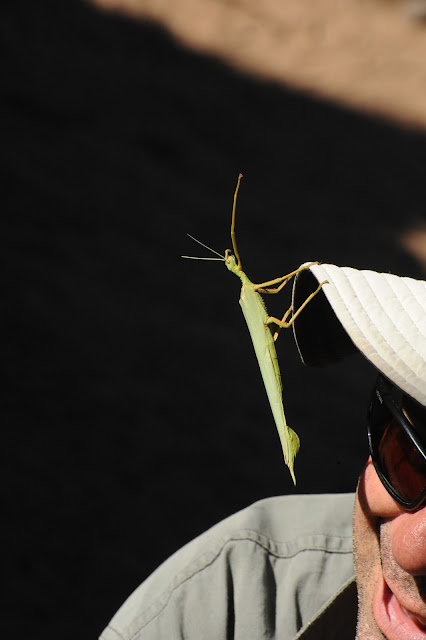 |
| The stick insect climbs onto Terry's hat |
A Pink-winged Phasma Podacanthus typhon.
After I safely took her out of the net and we took a look at her, she instinctively climbed up whatever was near, in this case it was Terry. Then once she had explored around his hat and could not climb any farther, and had not found any green foliage to hide in, she opened her wings and flew off. And what marvelous wings she had - bright pink, wow!
It looked like she was a female as her abdomen was swollen, perhaps gravid. She can lay eggs without mating, by parthenogenesis, and if she does so, the offspring wold be all female. If she did mate the sexes would be mixed.
For further information on stick insects have a look at the following link:
http://www.ozanimals.com/Insect/Pink-winged-Phasma/Podacanthus/typhon.html
 |
| She opens her wings to fly off |
 |
| She merged well with eucalypt leaves |


















